Best MongoDB Textbooks to Buy in December 2025
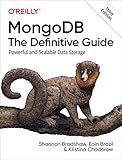
MongoDB: The Definitive Guide: Powerful and Scalable Data Storage


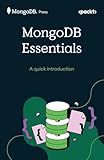
MongoDB Essentials: A quick introduction


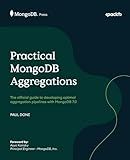
Practical MongoDB Aggregations: The official guide to developing optimal aggregation pipelines with MongoDB 7.0


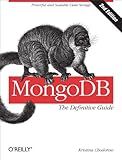
MongoDB: The Definitive Guide: Powerful and Scalable Data Storage


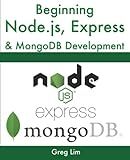
Beginning Node.js, Express & MongoDB Development


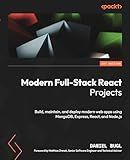
Modern Full-Stack React Projects: Build, maintain, and deploy modern web apps using MongoDB, Express, React, and Node.js


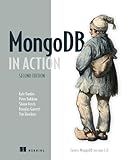
MongoDB in Action: Covers MongoDB version 3.0


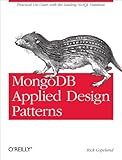
MongoDB Applied Design Patterns: Practical Use Cases with the Leading NoSQL Database
- AFFORDABLE OPTION FOR BUDGET-CONSCIOUS READERS.
- ECO-FRIENDLY CHOICE SUPPORTING RECYCLING AND SUSTAINABILITY.
- QUALITY ASSURANCE: INSPECTED FOR GOOD CONDITION BEFORE SALE.


To make array elements unique in MongoDB, you can use the $addToSet operator in combination with the $each modifier. This allows you to add elements to the array only if they are not already present. By using $addToSet with $each, you can ensure that duplicate elements are not added to the array.
Here's an example of how you can use $addToSet with $each to make array elements unique in MongoDB:
db.collection.update( { _id: ObjectId("5f6489137fe3750097cd6be0") }, { $addToSet: { arrayField: { $each: [ "element1", "element2", "element3" ] } } } )
In this example, the $addToSet operator is used to add multiple elements to the "arrayField" array field of a document with a specific _id. The $each modifier specifies the elements to be added, and only unique elements will be added to the array.
By using $addToSet with $each, you can easily make array elements unique in MongoDB without having to manually check for duplicates.
How to configure validation rules for array uniqueness in MongoDB?
In MongoDB, you can enforce array uniqueness using validation rules by creating a unique index on the array field. Here's how you can configure validation rules for array uniqueness in MongoDB:
- Create a unique index on the array field:
db.collection.createIndex({ "arrayField": 1 }, { unique: true })
- You can also add a validation rule to prevent documents from being inserted or updated if the array contains duplicate values.
db.runCommand({ collMod: "collectionName", validator: { $jsonSchema: { bsonType: "object", properties: { arrayField: { bsonType: "array", uniqueItems: true } } } }, validationAction: "error" })
- Once the unique index and validation rule are set, MongoDB will enforce the uniqueness of values in the array field. If a document with a duplicate value in the array is inserted or updated, MongoDB will throw an error.
By following these steps, you can configure validation rules for array uniqueness in MongoDB.
What is the relationship between uniqueness and data validation in MongoDB arrays?
In MongoDB arrays, uniqueness and data validation are closely related concepts.
Uniqueness in MongoDB arrays refers to ensuring that each element in an array is unique. This can be especially important when dealing with arrays that should not contain duplicate values, such as a list of unique tags or identifiers.
Data validation in MongoDB arrays involves defining rules and constraints to ensure that the data stored in the array meets certain criteria. This can include checking for valid data types, formats, and ranges.
When it comes to MongoDB arrays, uniqueness can be seen as a form of data validation, as ensuring that each element in an array is unique is a way of validating the data against a specific rule or criteria.
By defining rules for uniqueness and data validation in MongoDB arrays, you can ensure that the data stored in the arrays is accurate, consistent, and free from duplicates. This can help improve the quality and integrity of your data and prevent issues such as data duplication or inconsistencies.
What is the syntax for ensuring unique array elements in MongoDB?
To ensure unique array elements in MongoDB, you can use the $addToSet operator in MongoDB queries. Here's the syntax for using $addToSet to ensure unique array elements:
db.collection.updateOne( { _id: "<document_id>" }, { $addToSet: { <array_field>: <value_to_add> } } )
In this syntax:
- collection is the name of the collection where you want to update the document.
- _id is the unique identifier of the document you want to update.
- array_field is the name of the array field in the document where you want to add the value.
- value_to_add is the value you want to add to the array field.
When you use $addToSet, MongoDB will only add the value_to_add if it is not already present in the array field, ensuring unique elements in the array.
What is the role of compound indexes in enforcing unique array elements in MongoDB?
Compound indexes in MongoDB can be used to enforce uniqueness in array elements by creating a unique compound index on the fields that represent the array elements. By creating a compound index on the fields within the array, MongoDB ensures that no two documents can have the same combination of array elements.
For example, if you have a collection of documents that contain an array field called 'tags', and you want to ensure that each document can only have unique tags, you can create a compound index on the fields '_id' and 'tags' with the unique constraint. This ensures that no two documents can have the same combination of '_id' and 'tags' values.
By enforcing uniqueness on array elements using compound indexes, MongoDB provides a way to maintain data integrity and prevent duplicate array elements from being inserted into the collection. This can be especially useful in scenarios where you need to store unique values within arrays, such as tags, categories, or other types of lists.
How to prevent duplicate values in an array field in MongoDB?
One way to prevent duplicate values in an array field in MongoDB is to use the $addToSet operator when adding new elements to the array. The $addToSet operator will only add the element to the array if it does not already exist.
For example, suppose we have a collection called "users" with an array field called "favorites":
db.users.update( { _id: 1 }, { $addToSet: { favorites: "apples" } } )
If the array already contains "apples", nothing will happen. If the array does not contain "apples", it will be added to the array.
Another approach is to use a unique index on the array field to enforce uniqueness at the database level. This can be done by creating a unique index on the array field using the ensureIndex() method:
db.users.ensureIndex({ favorites: 1 }, { unique: true })
This will prevent any duplicate values from being inserted into the array field.
How to make array elements unique in MongoDB?
To make array elements unique in MongoDB, you can use the $addToSet operator. This operator adds a value to an array field only if the value is not already present.
Here's an example of how you can make array elements unique in MongoDB:
- Update a document using the $addToSet operator:
db.collection.update( { _id: ObjectId("documentId") }, { $addToSet: { arrayField: "newValue" } } )
In this example, replace collection with the name of your collection, documentId with the ID of the document you want to update, arrayField with the name of the array field you want to make unique, and newValue with the value you want to add to the array field.
- Query the document to verify that the array elements are unique:
db.collection.findOne({ _id: ObjectId("documentId") })
This query will return the document with the updated array field, ensuring that the elements in the array are unique.
By using the $addToSet operator in MongoDB, you can easily make array elements unique and avoid duplicate values in your arrays.
